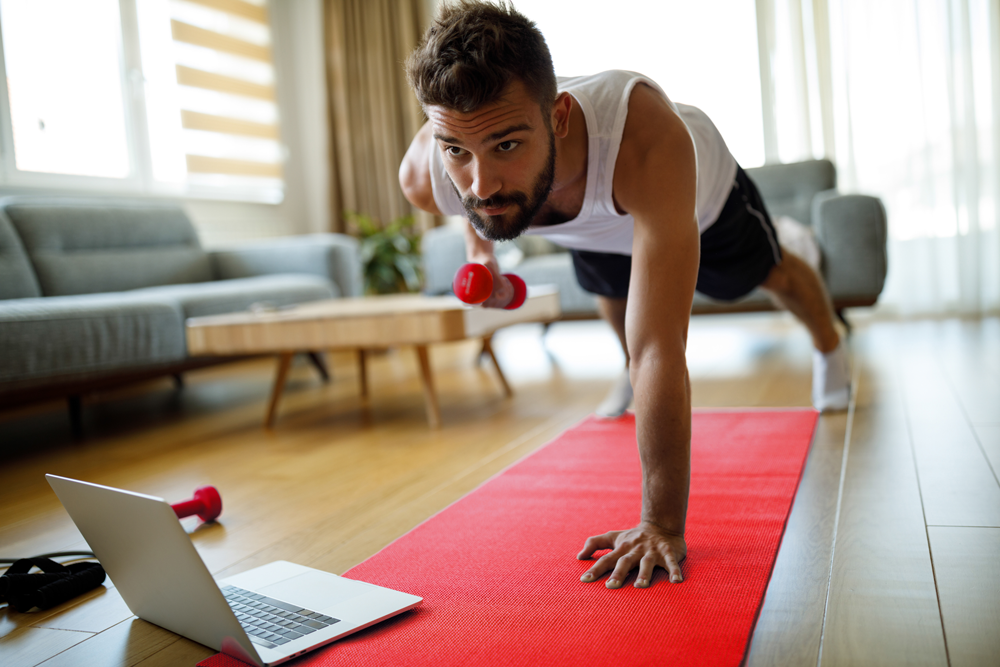
Widespread pandemic restrictions over the last year have forced many of us to re-think how, and where, we exercise. If you think your home is too small for a gym, think again! There are solutions to creatively set up a home gym even in a smaller space, and you don’t have to spend a lot of money. We can help!
Here are a few tips to help you create the perfect home gym with all the essentials, even when space is limited:
- You don’t need a lot of equipment to break a sweat! A few simple (and easy to transport) items like a yoga mat, swiss ball, equalizer bar, jump rope and some resistance bands will do the trick. Plus, there are plenty of workout videos and online classes that will get your heart rate up using only bodyweight.
- Less is more… Skip the large and heavy dumbbell rack and opt for a set of adjustable hand weights that can be stored in a compact carrying case. Alternatively, pick up a few kettlebells in various sizes. Kettlebells can be a versatile alternative to heavy, bulky dumbbells.
- Create a multi-purpose room. Ideally, you want to set up your home gym in a permanent location, like a spare room or a den. But if you don’t have a dedicated space to exercise, consider keeping your equipment neatly stored in a bin or a closet close to the area where you typically work out. If you follow workout videos or like to listen to music, you may want to consider repurposing a room that already has a television.
- Protect your joints… and your floors. If you do have a dedicated space for your home gym, consider investing in some foam or rubber puzzle mats. Not only do they provide better traction and protect your joints during high-impact training, they are inexpensive and can save your floor from being damaged by heavy weights and shoes. Plus, they don’t have to be glued down. They simply snap together and can be easily gathered if you decide to move or use the space for something else.
- Consider the resale value. Forget the floor-to-ceiling mirrors! Unless a future buyer has a home gym at the top of their wish list or plans to open a ballet studio in the basement, mirrored walls will likely be considered a negative feature. Try to avoid installing expensive and permanent pieces that may not increase the resale value of your home.







